| from 3 | € 14,99* / Stk. |
| from 5 | € 9,99* / Stk. |
| from 10 | € 8,99* / Stk. |
incl. VAT plus shipping costs
Immediate delivery, express possible ![]()
More than 20 Articles in stock
- Item no: 1563
Fast delivery times
All products are in stock with us!14 years of breeding experience
Let our team of experts advise you!High customer satisfaction
from over 3,000 reviews "The vampire crab was only described as Geosesarma dennerle in 2015. The colorful little crab originates from Indonesia. It reaches a dorsal carapace width of about 2 cm. The vampire crab has characteristic yellow-green to orange eyes, purple legs, purple claws, sometimes with white or light tips, and a purple underside and front. The back is purple with a relatively large yellow-green spot. Females have a U-shaped ventral valve, males have a V-shaped ventral valve.
Geosesarma dennerle is peaceful, but should not be kept with other crab species. A species terrarium is definitely recommended. A small group can definitely be kept here. The vampire crab is a group animal, single keeping is not appropriate for the species.
Vampire crabs like to take fish food tablets and special crab food, also freeze-dried insects and crustaceans like gammarus, crickets or grasshoppers are eaten very gladly. Raw fish is also recommended. White is opods and/or springtails can be kept in the aquaterrarium as a permanent live food source and clean-up troop. Although the Vampire Crab eats mostly animal food, it also likes to eat some fruit (apples, pears, nectarines, etc.) and vegetables (insecticide free!) from time to time. Foliage provides an important source of minerals.
Vampire crabs can be kept at a temperature of 24 - 28° C in a terrarium, aquaterrarium or an aquarium converted to a terrarium. The container should close absolutely tightly, because vampire crabs are masterful climbers and can escape even through the smallest slits. The terrarium must contain a 6-10 cm deep bottom tray with fresh water and several exit points. A small, rather shallow water part is also possible. To feel comfortable, vampire crabs need quite high humidity, so the terrarium should be sprayed once a day. Suitable substrate is bark mulch, sandy forest soil or peat. The animals need a good structure and digging possibilities. They do not eat plants and can therefore be kept in nicely planted terrascapes. Geosesarma dennerle is not suitable for keeping in an aquarium filled with water!
The females of the vampire crab carry about 20 - 80 eggs under the abdominal skirt for several weeks after mating; during this time they usually live hidden. After the fully developed young have hatched, fine flake food should be scattered extensively but sparingly in the terrarium. Since the adults are highly cannibalistic, you can greatly increase the survival rate of the young if you raise them separately and provide them with plenty of hiding places.
Our food recommendation: Crabs in the wild generally have a very varied diet. Most species are omnivores, and with the Natureholic Crab Feed Sticks we have taken this preference into account. They contain biologically balanced animal and vegetable ingredients that are also part of the natural food spectrum of omnivorous crabs in the wild. The valuable ingredients of NatureHolic Crab Feed support the moulting, digestion, growth and reproduction of your crabs in a completely natural way.
Our plant recommendation: For planting, use marsh plants, which are plants that are rooted in soil that is very wet or even submerged, but whose flowers and leaves are usually all or partially in the airspace and can be seen above the water surface. For example, marsh plants are usually found on and in lakes and streams, but also on and in garden ponds or other bodies of water that provide them with a wet substrate, but still leave room for flowers and leaves to show to the outside.
Expert Tip: We recommend NatureHolic 3 Phase Liquid when keeping invertebrates. The care set offers the best all-round protection for your invertebrates. It ensures optimal conditions for successful breeding and keeping.
| Scientific name: | Geosesarma dennerle Ng, Schubart & Lukhaup, 2015 |
| German name: | Vampire crab |
| Difficulty level: | for beginners |
| Origin/Distribution: | Indonesia |
| Coloration: | yellow-green to orange eyes, purple legs, purple claws, sometimes with white or light tips, and a purple underside and front. The back is purple with a relatively large yellow-green spot. |
| Age expectancy: | 2-3 years |
| Parameters: | shallow bowl with fresh water, air temperature 24 to 28 °C |
| Tank size: | from 60 cm for a group of 5-6 animals, from 40 cm for 3 animals |
| Food: | brown autumn leaves, frozen food, freeze-dried insects and crustaceans, fish meat, special food for carnivorous crabs, vegetables, green food, fruit |
| Reproduction: | not difficult, fully developed young hatch. However, adults are cannibalistic |
| Behavior: | peaceful, group animal |
| Socialization: | Keep in species tank |
| Further information: | Colorful jewels in the terrarium - land crabs of the genus Geosesarma, micro crabs, Limnopilos nayanetri - The smallest crab in the world!, Keeping mangrove crabs |
- Item no: 1563
Entdecke die Garnelio Welt!
Garnelio gehört zu den größten Onlineshops für wirbellose Aquarientiere weltweit.
Viele Artikel gibt es exklusiv nur bei uns im Shop.




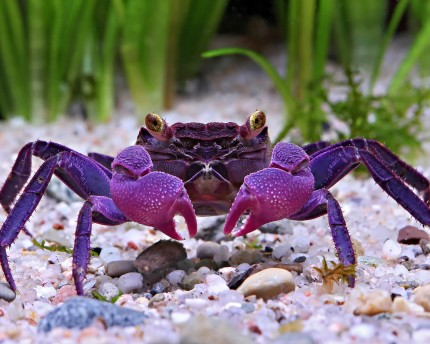









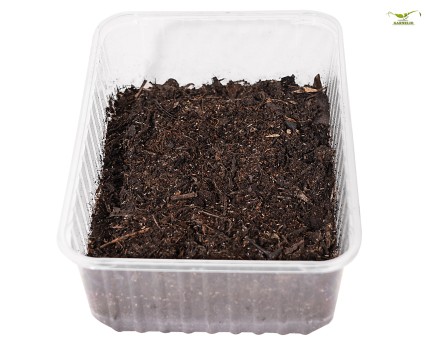





















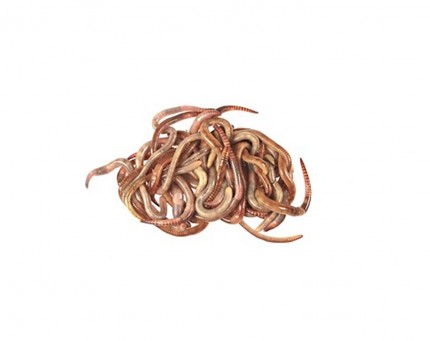





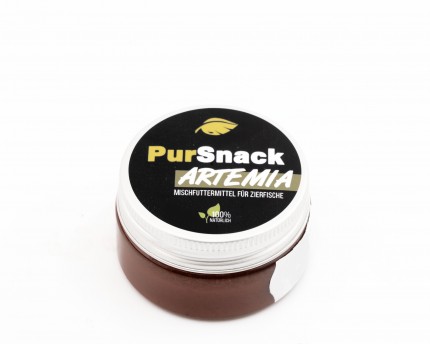


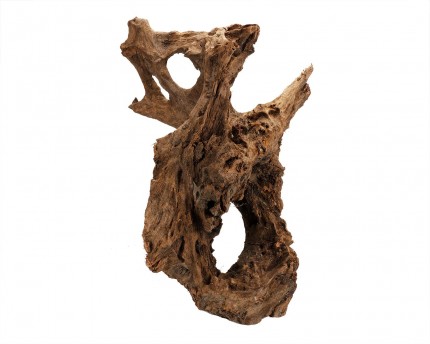




The fields marked with * are required.
I have taken note of the privacy policy.